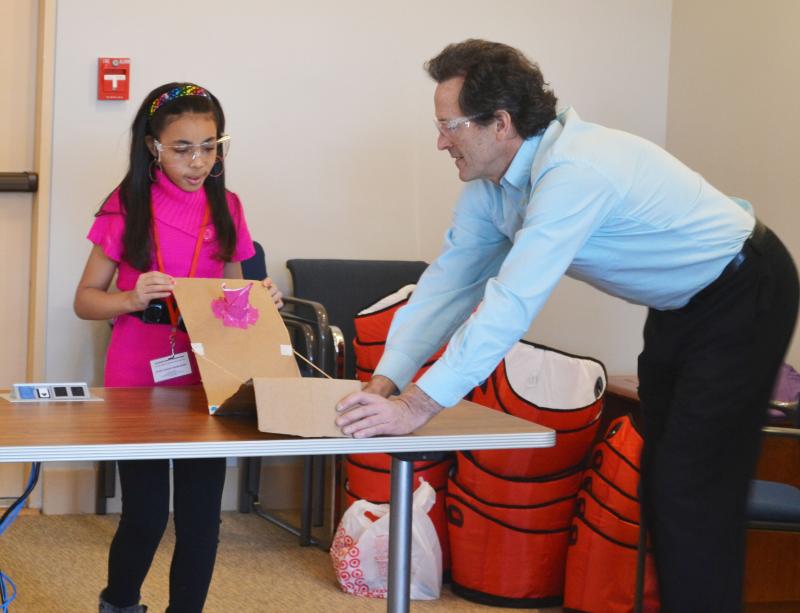Lockheed Martin welcomes engineers-in-training
Ready, set, launch!
On Monday, engineers of Lockheed Martin gave a group of young students a few tips on the how-to’s of catapult building using just a couple of pieces of cardboard, some rubber bands, paper clips, and a ping-pong ball.
“There’s something about getting kids into projects and building things with their hands that’s great,” said Faith Ball, a Lockheed Martin engineer.
Along with fellow engineer Mark Whalen, Ball led the class at the technology company's facility in Marion.
The students, who ranged in ages eight to 18, spent the morning getting the angles right on their catapults. Then, they put them to the test to see whose catapult could launch a ping-pong ball the furthest.
It’s all friendly competition, Ball said. Everyone goes home with a prize.
“Competition makes it more fun for the kids and keeps them engaged,” Ball said.
Of the project, Whalen said, “It gives the kids a chance to try different launch techniques.”
Liepa Ivanauskas, 11, said she had to modify her catapult a bit before the competition began.
“We did one trial and the ball went straight down. So, I had to change a couple of things so it would go further,” Leipa said.
Twelve-year-old Samantha Ball also went through a trial and error phase to perfect her catapult.
“I changed the angle and that seems to be working,” Samantha said.
With many students on school vacation this week, the timing was perfect for instructing the budding engineers on the basics, Whalen said.
This week just also happens to be National Engineers Week.
“It’s a good chance to celebrate what we do, get young students to do technological projects, and get them excited about engineering,” Whalen said.
In the past, Ball said Lockheed Martin has held engineering courses for kids showing them how to build hovercrafts, towers, and bridges.
“The project could be something simple, but it triggers someone to think about engineering,” Ball said. “It’s nice to make that kind of impact.”
Whalen agreed.
“We always use engineering principles such as energy and electricity. It’s all physics,” Whalen said. “Most often the kids already know these things.”
















